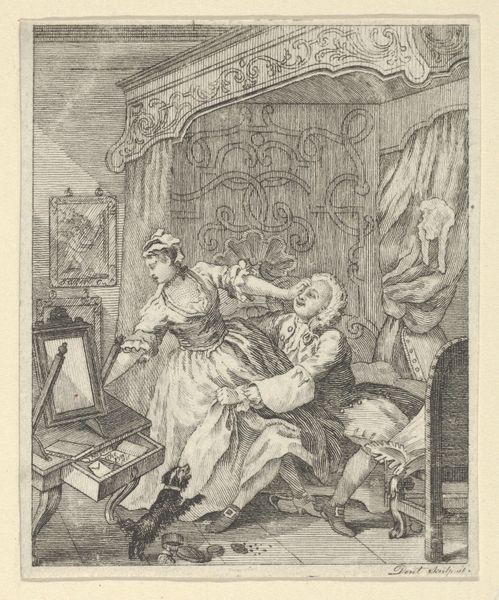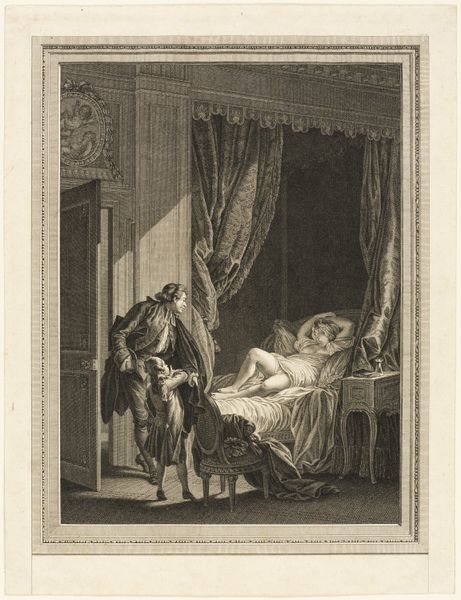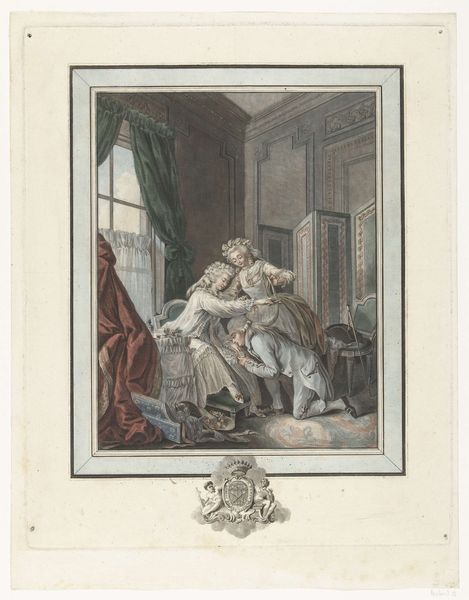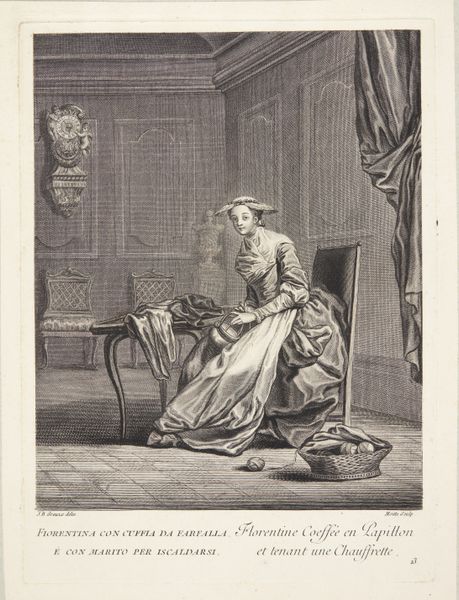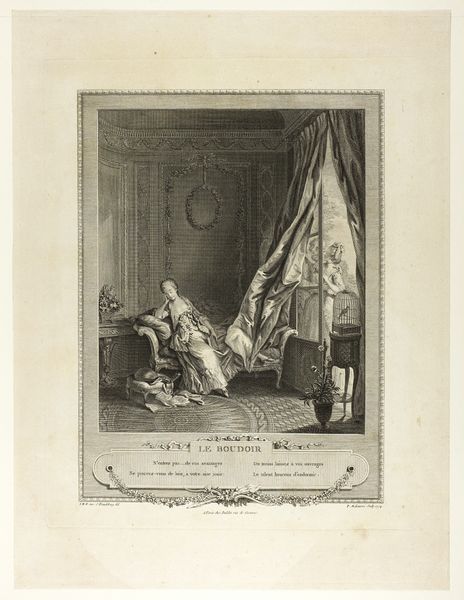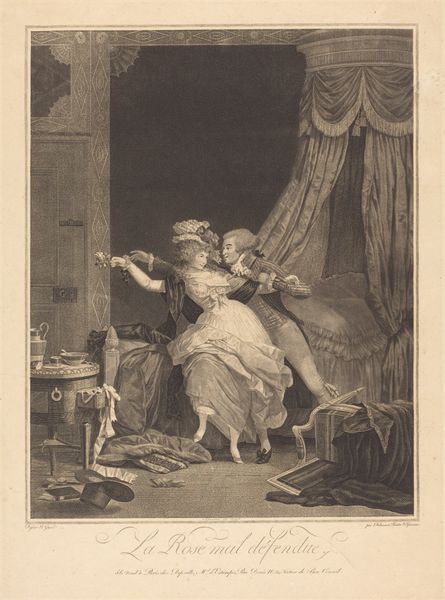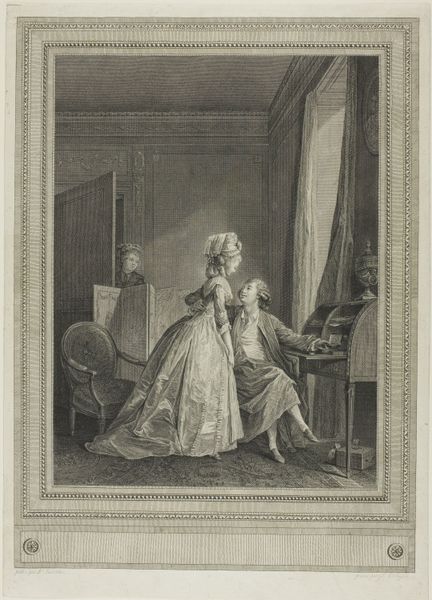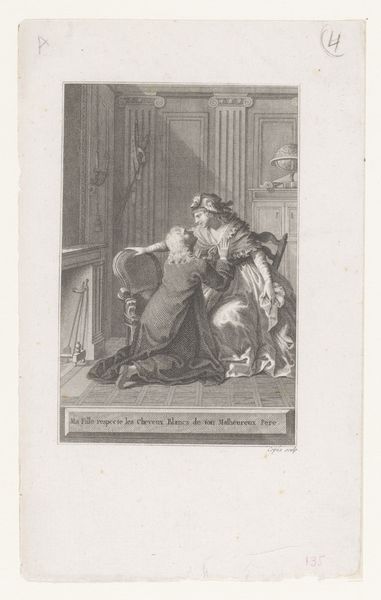
drawing, print, etching, paper, engraving
#
drawing
#
aged paper
#
toned paper
#
16_19th-century
#
narrative-art
# print
#
etching
#
old engraving style
#
figuration
#
paper
#
old-timey
#
romanticism
#
france
#
19th century
#
genre-painting
#
history-painting
#
engraving
Dimensions: 320 × 237 mm (image); 420 × 303 mm (plate); 431 × 310 mm (sheet)
Copyright: Public Domain
Editor: Here we have "Tardy Repentance," an undated etching by Ferdinand Levillain. It’s on aged paper, giving it this incredibly fragile feel, and the scene itself looks pretty intense. The man grabbing her...it feels a bit violent, doesn’t it? What’s your take on this, particularly looking at it as an etching, and what the artistic process tells us? Curator: That's a keen initial read, particularly emphasizing violence. Now, let’s think about the context and how that influences the piece’s production. The 19th century saw an explosion in print culture. Etchings, like this, allowed for relatively inexpensive reproduction and wide distribution of images. Considering Levillain worked in France during this era, and the work has visual and thematic connections with Romanticism, could it be about manufacturing both an image and an emotion for a broad consumer base? The ‘scene’ is meticulously crafted, almost staged. Notice the opulent details. Editor: So you’re saying it’s less about individual artistic expression, and more about mass production and consumption of imagery? But isn't Romanticism known for its individualism? Curator: Precisely! Romanticism emphasizes emotion, sure, but think about its materials. The printing process allows the emotional narrative to become a commodity in a burgeoning capitalist society. Look closely at the layering of ink, the precise lines achieved through the etching process...they weren't meant for an intimate, unique experience, but for multiplication and widespread access. It highlights the labor behind artmaking and the emerging art market. Editor: That shifts my perspective. It's easy to focus on the figures and their drama. But looking at the production, the labor, gives us a new lens. Curator: Indeed. By investigating the materiality and methods, the artwork becomes a mirror reflecting the social and economic forces at play in 19th-century France. We start questioning who *really* benefits from "repentance" manufactured and sold as imagery. Editor: I never considered how the act of mass producing an image like this could shape its meaning. It’s more complex than just the surface-level narrative. Thanks! Curator: And I learned that each method contains it's unique ability to alter perspectives from historical events!
Comments
No comments
Be the first to comment and join the conversation on the ultimate creative platform.

